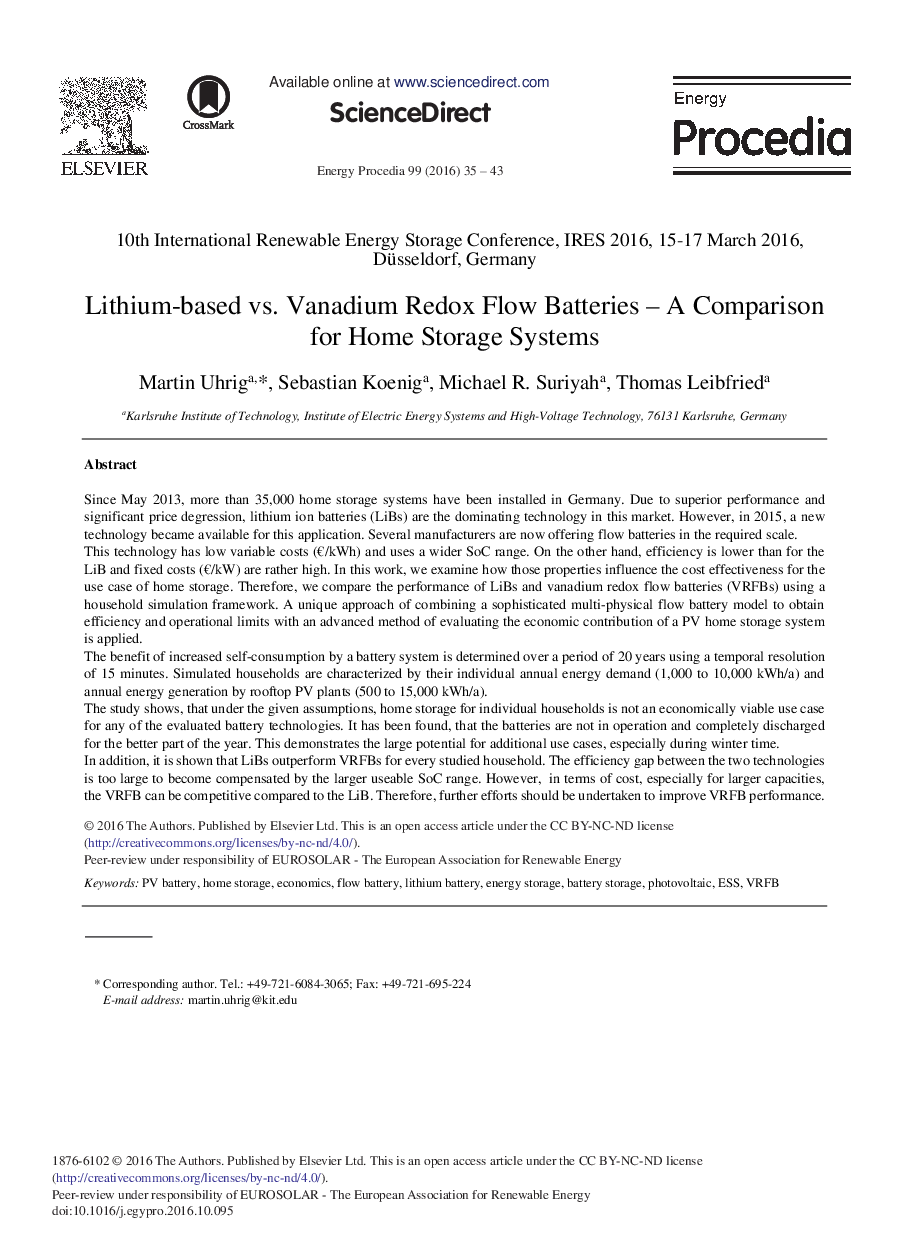| Article ID | Journal | Published Year | Pages | File Type |
|---|---|---|---|---|
| 5446657 | Energy Procedia | 2016 | 9 Pages |
Abstract
The benefit of increased self-consumption by a battery system is determined over a period of 20 years using a temporal resolution of 15Â minutes. Simulated households are characterized by their individual annual energy demand (1,000 to 10,000 kWh/a) and annual energy generation by rooftop PV plants (500 to 15,000 kWh/a). The study shows, that under the given assumptions, home storage for individual households is not an economically viable use case for any of the evaluated battery technologies. It has been found, that the batteries are not in operation and completely discharged for the better part of the year. This demonstrates the large potential for additional use cases, especially during winter time. In addition, it is shown that LiBs outperform VRFBs for every studied household. The efficiency gap between the two technologies is too large to become compensated by the larger useable SoC range. However, in terms of cost, especially for larger capacities, the VRFB can be competitive compared to the LiB. Therefore, further efforts should be undertaken to improve VRFB performance.
Related Topics
Physical Sciences and Engineering
Energy
Energy (General)
Authors
Martin Uhrig, Sebastian Koenig, Michael R. Suriyah, Thomas Leibfried,
